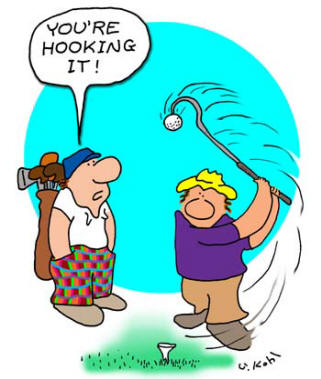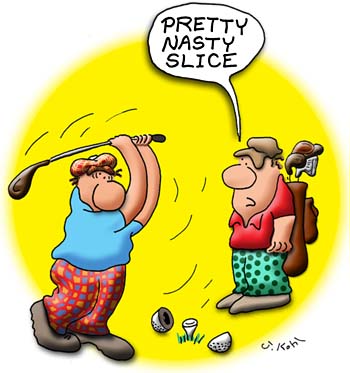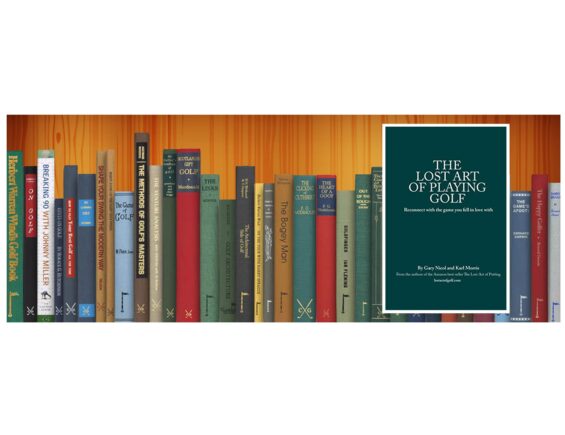 The term “Tee” is believed to be a backformation from the Old Scottish “teaz” (substantive and verb) taken as a plural and “tie” (verb), but its origin is unknown. The oldest mention of the word in its current form dates back to 1744 in Articles & Laws in Playing at Golf, but the earlier form Teaz appears as early as 1673 in the Wedderburn’s Vocabulary giving Latin equivalents for golfing terms, where Statutem (support or prop) is suggested as an equivalent for Teaz.
The term “Tee” is believed to be a backformation from the Old Scottish “teaz” (substantive and verb) taken as a plural and “tie” (verb), but its origin is unknown. The oldest mention of the word in its current form dates back to 1744 in Articles & Laws in Playing at Golf, but the earlier form Teaz appears as early as 1673 in the Wedderburn’s Vocabulary giving Latin equivalents for golfing terms, where Statutem (support or prop) is suggested as an equivalent for Teaz.
Golf tees are generally used for the first stroke of each hole, and the area from which this first stroke is hit is informally also known as a tee (officially, teeing ground). Before this, to elevate the ball for a drive the golf ball was teed up on a little heap of sand that was provided in boxes; this explains the historical name “tee boxes” and why that before the advent of the wooden tee the word “tee” was used to refer to the cone or mound of sand that fulfilled the same function. The development of the tee was the last major change to the rules of golf.
A popular alternative to lift the ball off the turf was the disposable tee cup, a ring of cardboard that was sold in perforated booklets; the golfer had to tear off one of these along the perforation and shape it by rolling it between the fingers. Celluloid tees and other wooden or rubber gadgets also existed to help form a sand tee.
The first tee resembling today’s tees to be more widely known was the “Perfectum”, invented by Percy Ellis of Surrey, England in 1892. it consisted of a rubber-and-iron peg with a crown of rubber pins upon which the ball rested. A similar concept, the “Victor” tee, had a cup-shaped rubber head and metal spike base and was patented in 1897 by PM Matthews of Scotland.
Many claim that the first golf tee to closely resemble the standard modern tee was the one invented by George F. Grant  and patented by him in 1899. However there had been several previous patents for golf tees, some seeming to be quite modern in both form and function.
and patented by him in 1899. However there had been several previous patents for golf tees, some seeming to be quite modern in both form and function.
These and other variations failed to catch on, as most golfers-whether because of tradition, habit, or concerns about the rules-continued using heaps of sand. It took a strong marketing effort by Dr. William Lowell, Sr. in the 1920s to bring manufactured tees into widespread use. The little tee, a simple wooden peg with a flared top, was manufactured and painted red (so it could easily find in the grass) and became known as the Reddy tee, which was a wordplay both on the fact that it was red and the suggestion that it was always at hand (‘ready’). Sales of Lowell’s “Reddy Tee,”, took off after Lowell hired professional golfers Walter Hagen and Joe Kirkwood, Sr. to promote the product during exhibition matches. It was copied around the world, and remains the most common type of golf tee.
Despite many other designs and patents before and since then, most golf tees are still simple nail-like objects designed to be pressed into the ground, and many are still made of wood although plastic has become more and more common.
Related posts
Golf Books #382 (The Lost Art of Playing Golf)
on Tuesday 22, JuneDoes the swing create the shot or does the shot create the swing? With...
Golf Books #178 (1,001 Pearls of Golfers’ Wisdom: Advice and Knowledge, from Tee to Green)
on Tuesday 31, MarchThere’s an old adage about sportswriting that says “the smaller the ball, the better...


